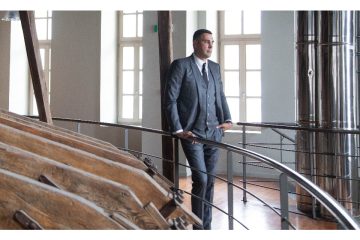Legends (ISTANBUL)
Throughout history, many myths about structures and locations have come to the present. Let’s look at what happened for Istanbul.
Istanbul’s Missing Island Vordonisi
The Kadikoy district is home to 9 islands in the strip from Bostanci to Kartal. The Prince Islands, believed to have been sent by princes and princesses who were not fit for the palace in the old days, are one of these islands, which received names such as the monks and monks, which are dangerous to the church, and are called the monks. It has been determined that the island is yet to be named. We can see it’s a sunken island, both from an old map in history and from a satellite image. It’s called the Batik Monastery cliffs or the Little Island.
According to the rumor, a Byzantine Monastery was built on this island until 1000 years ago. It is believed that the Satyros Monastery (Bryas Palace) in Kucukyali is a twin and is made because of a religious disagreement. While wise Fotios was a normal wise monk, he came to the Byzantine Palace and worked when his brother Sergios married his Empress Theodora. The patriarch, taken from the Patriarch, was banished to the monastery in Kucukyali, while Sergios ascended to the Orthodox Greek Patriarch and built a monastery for Vordonisi. In the Christian world, it has caused divisions, and in the old partic, in the Kucukian, someone builds the monastery as a spite for Fotios. Because of political religious turmoil, the Fotios Vordonisi Island is banished and replaced by the old patriarch. When old boss Ognatios died, Fotios became the boss again and died 7 years later. And in relation to the disappearance of this island, some scientists say that it was buried in water with people in it as a result of an earthquake. According to the legend, monasteries of old and new bosses are bound under water by tunnels, but why two enemy bosses would make such a combination is a question mark. The rise of this topic is very important for both history and tourism.
Anatolian Lantern- Anadolu Feneri
Anatolian Lantern, located at the most extreme point in the north of the Anatolian coast in Bosphorus. It was founded in the 21st century as a coastal village. It got its name from the lighthouse here. Although there are records of a wooden lighthouse in the area in 1755, it is considered to be the current carpet of the lighthouse in 1834. In the neighborhood opposite the Rumeli lantern, a historic fountain (1824) from Mahmut II time is located. The water from the fountain comes from Mecitdere water, which is approximately 5 km away.
The Anatolian Citadel – Anadolu Hisarı
Anadolu Hisarı, located at the narrowest point of the Bosphorus (660 meters), has this island because it was built by Yıldırım Bayezid in 1395 before the conquest of Istanbul. The Anatolian Citadel, which is critical to Istanbul’s conquest and transition of the Bosphorus, external walls were added during the Mehmet II period. (During construction of Rumeli Hisari between 1451-1452)
Arnavutköy
In the neighborhood, which was called “Anaplus” during the Byzantine period, it was also known as “the Village of Angels”, as many churches and shenanigans were found. The Albanian village was named after many Albanians in the Ottoman period. In another story, it is thought that an Albanian peasant lived in this area during the Ottoman period and that he is the name of the father. Those passing through this region, which was on their way to Europe at the time, called it the “Village of Albania” and have been called the Albanian village over time.
Baltalimanı
This neighborhood is known as the captain’s name because of the construction of ships of the 120-piece fleet of Baltaoğlu Süleyman, the Captain of the naval fleet of Fatih Sultan Mehmet.
Beşiktaş
The name of the Beşiktaş neighborhood during Byzantine period was “Diplokionion” (double column). His name was taken from two large towers in the crusade area. The neighborhood was a small village when it was taken by the Ottomans. It is said that Barbaros Hayrettin Pasha received today’s name from the ship’s sledge and the stone carved in the shape of a cradle.
Beykoz
Before the conquest of Istanbul, it was called “Ameae” in Byzantine times. Because of a Byzantine brain sitting here before the conquest, the Turks called it “Beykos” at the time. When Fatih Sultan Mehmet III was hunted at the site of the mesmerie called Beykoz Çayır, when Selim IV was shooting arrows. It was a place in Murat IV where he played javelin.
Büyükdere
His name was “Batikolpos” in the Byzantine period. During the fourth Crusade, the Crusaders camped here. Selim III’s favorite place was called “Büyükdere” due to the stream found here.
Çubuklu
Although there are different rumors about the name of the Cubuklu, a neighborhood connected to Beykoz district, it is said that the name came from the Cuban Lulas made here. Another rumor is the name of the Cuban was given to Bayezid II’s son Yavuz Sultan Selim because of the menk of the “Red Stick”.
Maiden Tower- Kız Kulesi
It is said that in 340 BC, Commander Chares had built a memorial tomb for his wife, and in 411 BC, after the battle of Athens & Sparta, the Athenians had chained the Spartans to control them, and that the Girl Tower had become a fortress. Another legend is the “Legend of the Snake”. According to legend, the island on which the Tower of Girls is now on was once the harem of the Seljuk reign. The island was surrounded by water like today, and there was a tower in the middle. Inside the tower, the beautiful daughter of the Sultan of Seljuk lived with the concubines. The reason she lived here was because Sultan dreamed that one evening his daughter would die of snake stings. He built a tower here to protect his daughter and locked her up here. The Anamas used concrete pipes to get water to the island so that no snakes could enter the tower. Years later, one day Sultan’s daughter was sick and fired. All the doctors of the country have tried to heal the girl and have finally healed the daughter of the Sultan. Gifts from all over the country to celebrate his recovery. But there was a basket of grapes and a little snake hiding in them, and the snake stabbed the Sultan’s daughter in the night. The legend is described in the love dimension of the myth, according to legend, there was a temple made for the goddess Aphrodite on the Uskudar backs today. Hero, who named the legend, was one of the nuns in this temple and his duty was to look at the birds in the tower. Every year, in spring, there are ceremonies around the temple, and those who seek love, or wish to have their lovers, would pray here. Leandros, who also sits on the other side of the Bosphorus in one spring, comes to the temple to attend this ceremony and meets Hero here. Two young people fall in love. But there is an obstacle to this love. Hero is a nun, and he is strictly forbidden to marry. Leandros has decided to try every way to get to Hero no matter what. One night he looks from shore to tower, and he sees fire burning on the top of the tower. Hero shows Leandros the way to the Tower with his torch. The sea is stagnant and the bright light of the moon illuminates Leandros’ path. Leandros, a good swimmer, jumps to the sea and swim to the tower to get to Hero. Two young people get together and every night after that day, Leandros swims to the Tower of Girls to get to Hero. In a stormy night, Leandros jumps to the Bosphorus and starts swimming again to get his love Hero, guiding him with a torch in Hero. But with the wind, Hero’s torch goes out and can’t burn it again. Leandros loses his way in the dark, disappears into the darkness of the Bosphorus because he doesn’t know where to swim. Waiting for his lover until morning, Hero sees Leandros’ body on the other side when the day is light, and he can’t stand the pain and he drops himself in the waters of the Bosphorus.
Battal Gazi Legend
According to legend, Battal Gazi, who came to siege Istanbul, had no results without siege, set up his headquarters on the shore opposite the Tower of Girls and lived here for seven years. And the reason he’s been here so long is because he’s in love with the daughter of the merit. Üsküdar Tekfuru closes his treasures and daughter in the tower because he is afraid of Battal Gazi. Returning from the Sam expedition, Battal Gazi comes to the Tower of Girls with a boat and takes the daughter and the treasures of the offer. Then he jumps on his horse and goes away. It is said that the word “the horse who took the horse passed Üsküdar” is also used among the public.
Haliç
According to legend, the bottom of the Golden Horn is the gold of Byzantine, and the Japanese say we clean the Golden Horn, but we take the gold at the bottom, and our government won’t accept it. And then when we clean it up, there’s no gold, unfortunately.
The glass in the Cemberlitas- Çemberlitaş’taki kadeh
According to legend, under Cemberlitas, Hz. The last cup used by Jesus is found and protected by a thousand apostles. It is believed that the person who drank from this glass is immortal
Tunnels under the Kapalicarsi- Kapalıçarşı’nın altındaki tüneller
According to legend, there are dreads beneath the Kapalicarsi, where they are connected to the Sarnici of the Underground, and even from the bottom of the Marmara Sea to Kinaliada.
Snake statue – Yılan Heykeli
According to legend, in Sultanahmet Square, the snake statue is a talisman that protects Constantinople from snakes and reptiles.
KAYNAKÇA
https://www.ilimvemedeniyet.com/fikirtepe-tarihi.html
http://sehirharitasi.ibb.gov.tr/
https://hayalleme.com/tarihi-eserler/yarimburgaz-magaralari/
https://dunyalilar.org/kucukcekmece-golunun-insanlari.html/
http://www.tayproject.org/TAYages.fm$Retrieve?CagNo=3169&html=ages_detail_t.html&layout=web
https://www.hurriyet.com.tr/seyahat/yarimburgaz-magarasi-nerededir-yarimburgaz-magarasi-olusumu-
http://www.yapi.com.tr/haberler/iste-marmaraydan-cikan-tarih_113543.html
https://www.ntv.com.tr/turkiye/istanbulun-sakli-tarihi-ortaya-cikti,R5vo2TX5wUKKkiX8tEjdoQ
http://istanbul.gov.tr/yenikapi-arkeoloji-kazilari-istanbulun-tarihine-isik-tutuyor
https://www.aylakadamali.com/istanbul-arkeoloji-muzesi-eserleri-10-buyuleyici-eser/https://www.milliyet.com.tr/istanbul-arkeoloji-muzesi-nde-bulunan-7-efsane-lahit–molatik-9756/
https://www.mynet.com/istanbul-dan-tarihi-eser-fiskiriyor-iste-bir-cok-farkli-noktadan-cikan-tarihi-eserlerin-bulunma-hikayesi-110104467492
https://www.aylakadamali.com/istanbul-arkeoloji-muzesi-eserleri-10-buyuleyici-eser/
Polat, Berna (2019). Kentsel Arkeoloji Ve Müze İlişkisi: İstanbul Arkeoloji Müzeleri İstanbul Üniversitesi Sosyal Bilimler Enstitüsü Yüksek



